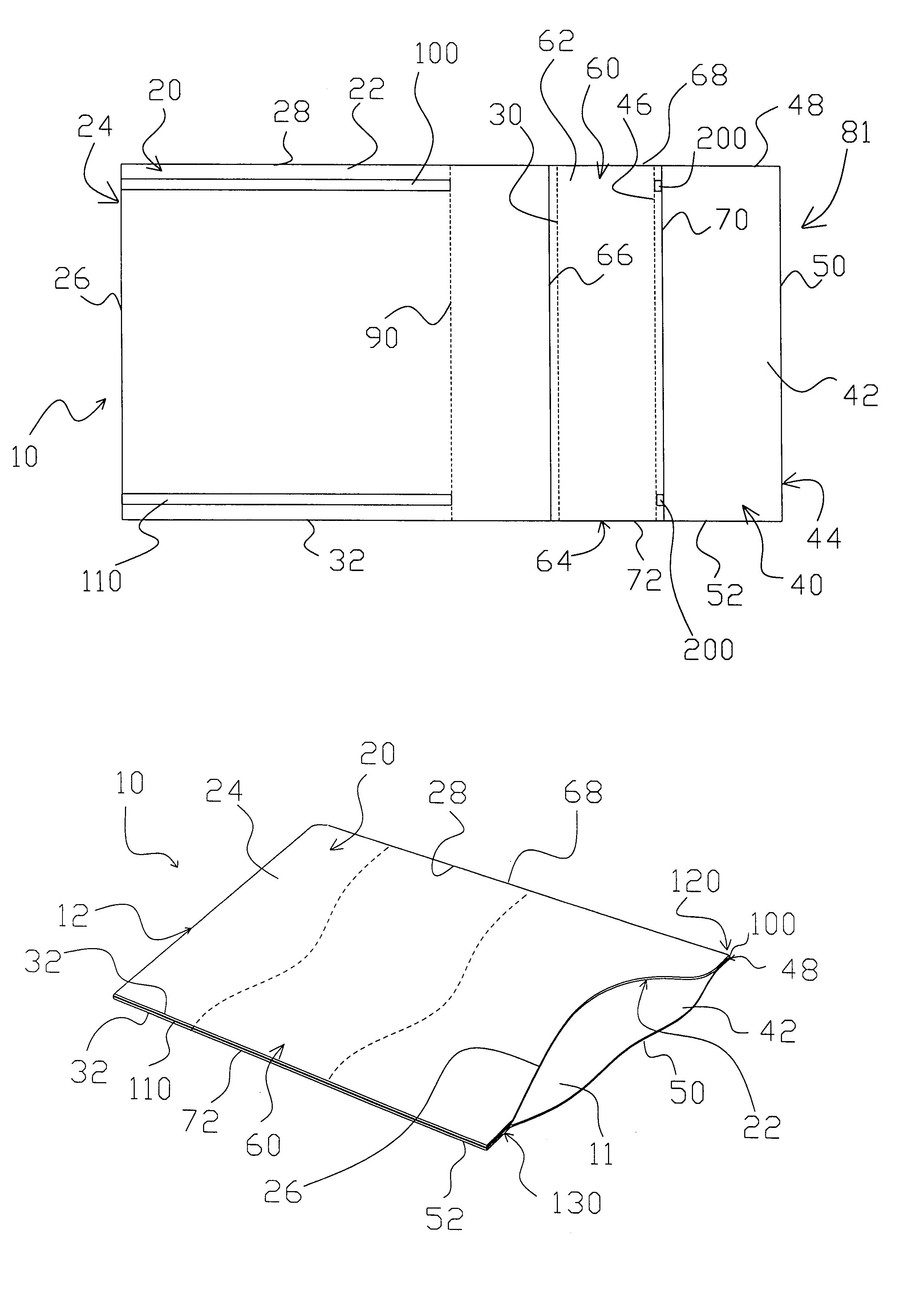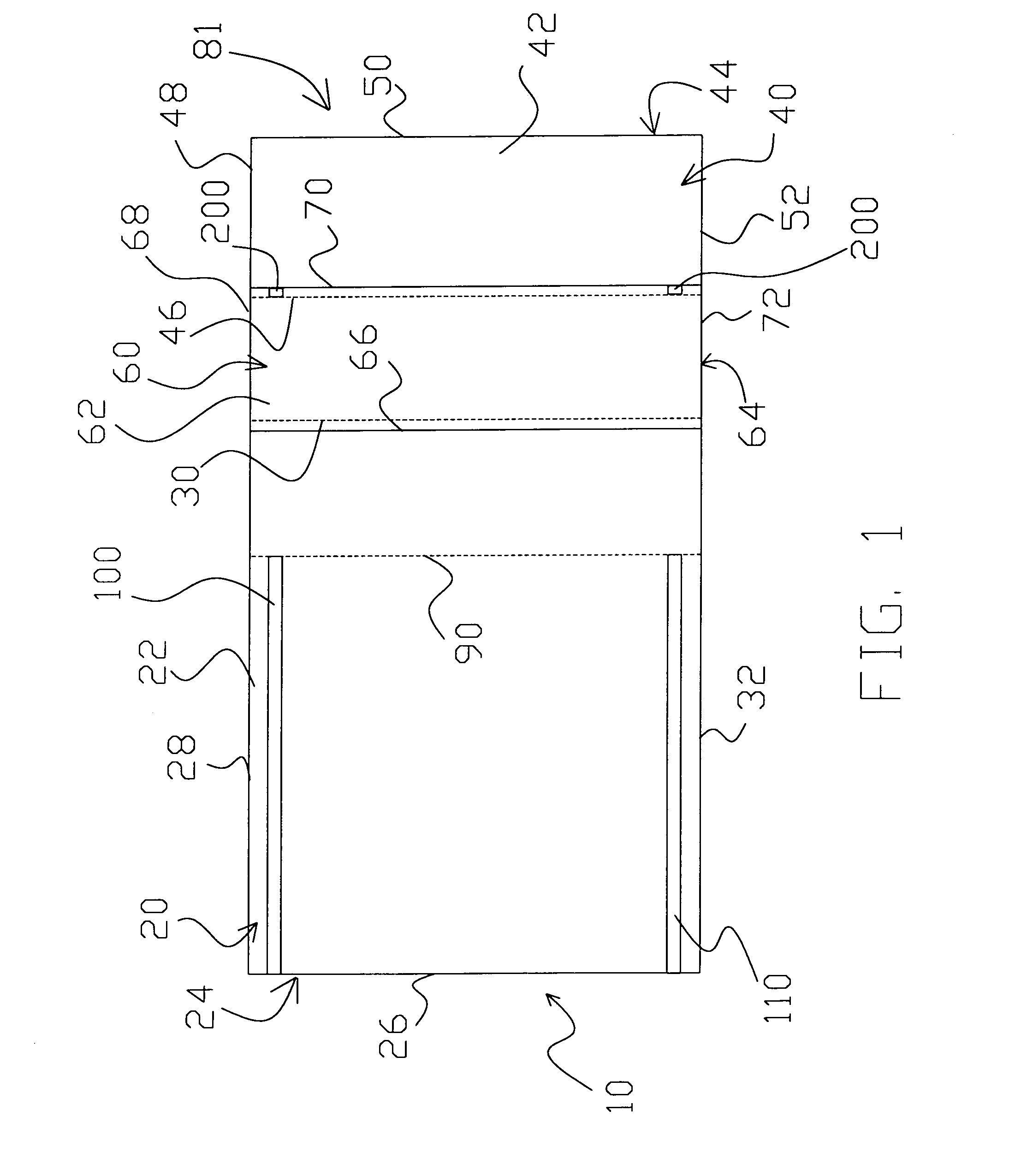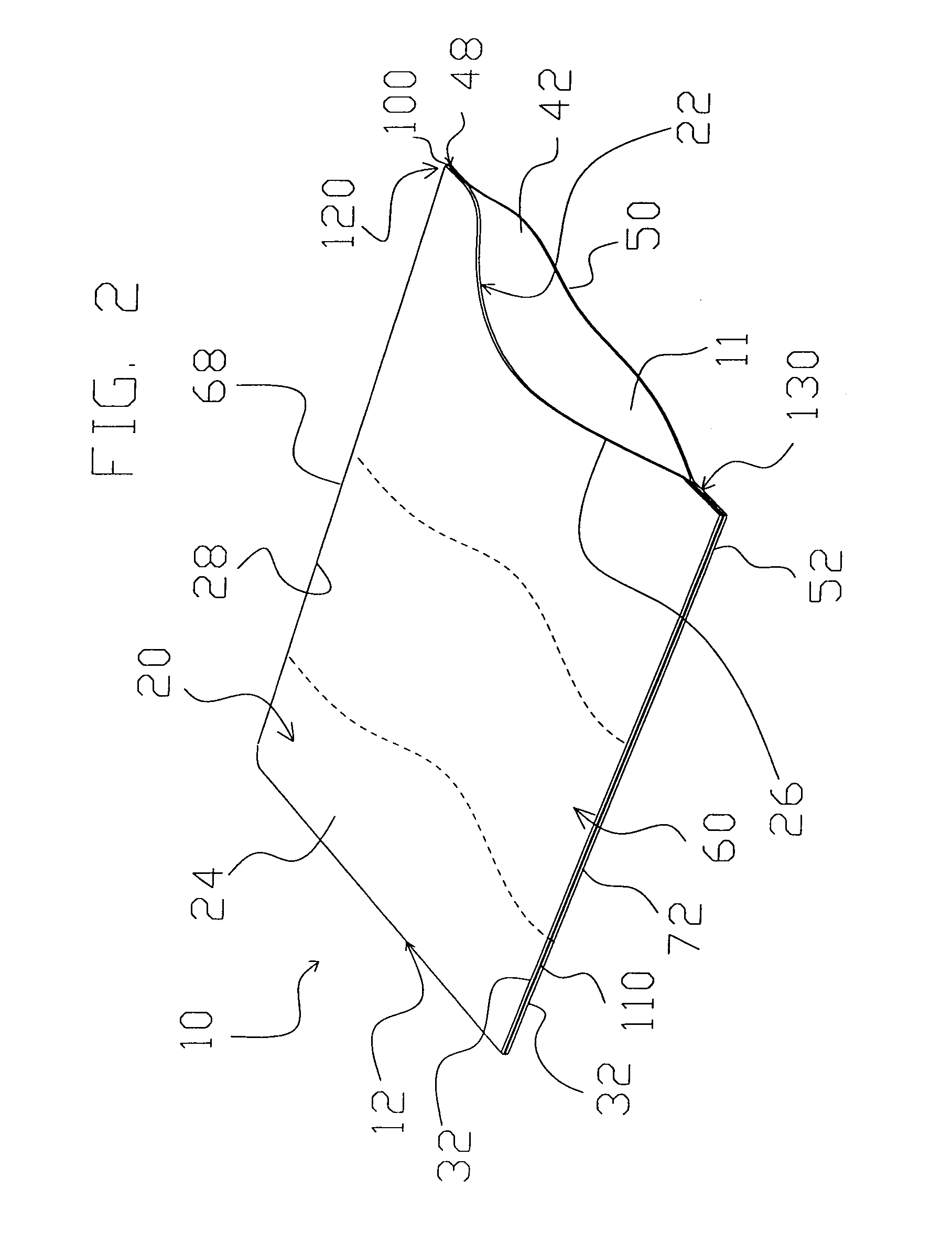Side-sealed bag having label section and method of production therefor
a side seam and label technology, applied in the field of bags, can solve the problems of increasing costs, difficult seaming with appropriate strength, and nonwoven fabrics rarely achieve a practical balance of strength and contents, and achieve the effect of easy manufacturing
- Summary
- Abstract
- Description
- Claims
- Application Information
AI Technical Summary
Benefits of technology
Problems solved by technology
Method used
Image
Examples
Embodiment Construction
[0028]In describing the preferred and alternate embodiments of the present invention, as illustrated in FIGS. 1–8, specific terminology is employed for the sake of clarity. The invention, however, is not intended to be limited to the specific terminology so selected, and it is to be understood that each specific element includes all technical equivalents that operate in a similar manner to accomplish similar functions.
[0029]Referring now to FIGS. 1–2, the present invention in its preferred embodiment is a bag 10, wherein bag 10 is preferably a side-sealed mesh bag having a label section generally comprising a first mesh fabric section 20, a second mesh fabric section 40, a label section 60 and at least two thermoplastic sealing strips 100 and 110.
[0030]Specifically, first fabric section 20 is preferably substantially rectangular shaped and preferably has top and bottom surfaces 22 and 24, respectively, and first, second, third and fourth edges 26, 28, 30 and 32, respectively. Simila...
PUM
| Property | Measurement | Unit |
|---|---|---|
| thickness | aaaaa | aaaaa |
| angle | aaaaa | aaaaa |
| thickness | aaaaa | aaaaa |
Abstract
Description
Claims
Application Information
 Login to View More
Login to View More - Generate Ideas
- Intellectual Property
- Life Sciences
- Materials
- Tech Scout
- Unparalleled Data Quality
- Higher Quality Content
- 60% Fewer Hallucinations
Browse by: Latest US Patents, China's latest patents, Technical Efficacy Thesaurus, Application Domain, Technology Topic, Popular Technical Reports.
© 2025 PatSnap. All rights reserved.Legal|Privacy policy|Modern Slavery Act Transparency Statement|Sitemap|About US| Contact US: help@patsnap.com



